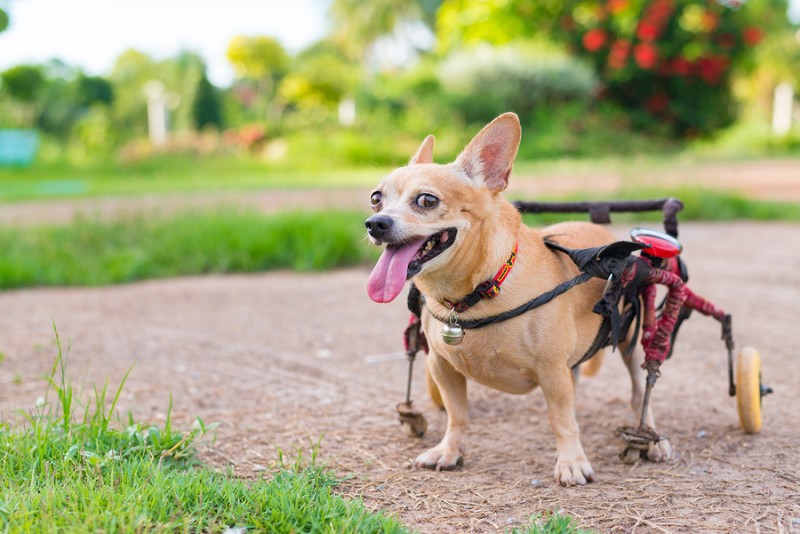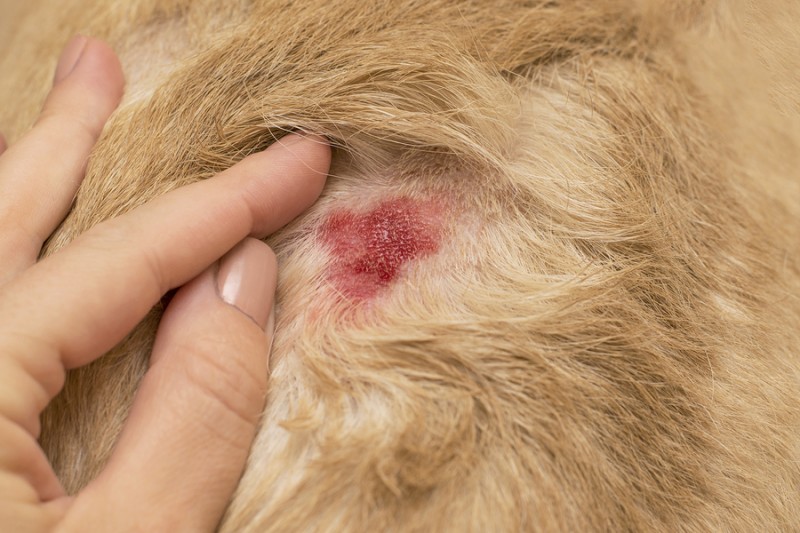Distemper in dogs and its treatment
Distemper in dogs is a serious viral disease. Although the symptoms are varied, one of the clearest signs is weakness in the hind legs. In case of contagion, we must act quickly, as it can be lethal. We tell you what your treatment is.
What is distemper in dogs and how is it spread?
The RNA virus, belonging to the Paramyxoviridae family, is the cause of one of the most contagious and dangerous diseases. Better known as distemper in dogs, it is contracted by direct contact with one that is infected. The symptoms do not appear immediately since there is an incubation period between 14 and 18 days beforehand.
Not all strains of distemper in dogs have the same virulence. Therefore, each clinical picture has its own severity and evolution. Replication occurs in the lymphoid tissue, thus causing immunosuppression in the animal. From there it progresses and infects the central nervous system. At this point is when we can observe the weakness in the hind legs.
Distemper in dogs mainly affects puppies between 3 and 6 months of age, as they have a weaker immune system. However, older dogs can also be infected.
Symptoms of distemper in dogs
The initial symptoms of distemper in dogs are very varied, and include rhinitis, mucopurulent discharge, cough, conjunctivitis, vomiting or diarrhea, fever, dehydration, anorexia or weight loss, and pneumonia (due to secondary bacterial infections), among others. others.
When the disease reaches the central nervous system, other types of symptoms appear. These are encephalitis, which is responsible for weakness in the legs, tremors and various paralyzes, as well as convulsions and blindness.
Encephalitis, when it affects adult dogs, can occur in two different ways. In the first place, as multifocal encephalitis, whose main characteristic is incoordination, tilted head, facial paralysis and tremors, as well as the aforementioned weakness in the hind legs. This type of distemper in dogs appears between the ages of 4 and 8, and evolves into paralysis , although they can recover.
Secondly, when it comes to older dogs, that is, older than 6, a visual deficit appears, as well as mental depression, personality changes, tournament and also inability to hold the head. Recovery is complex in these cases.
Treatment of distemper in dogs
There is currently no specific treatment for distemper in dogs. Although there is a way to prevent contagion and that is through vaccination. In the event of contagion, isolation is essential to avoid spreading the disease.
For secondary infections, antibiotics will be administered, and for the specific symptoms of distemper in dogs, anti-inflammatories and antipyretics. There are also medications for seizures. In addition to all this, we will make sure that the animal eats and drinks so as not to become dehydrated.












Leave a Reply
Want to join the discussion?Feel free to contribute!